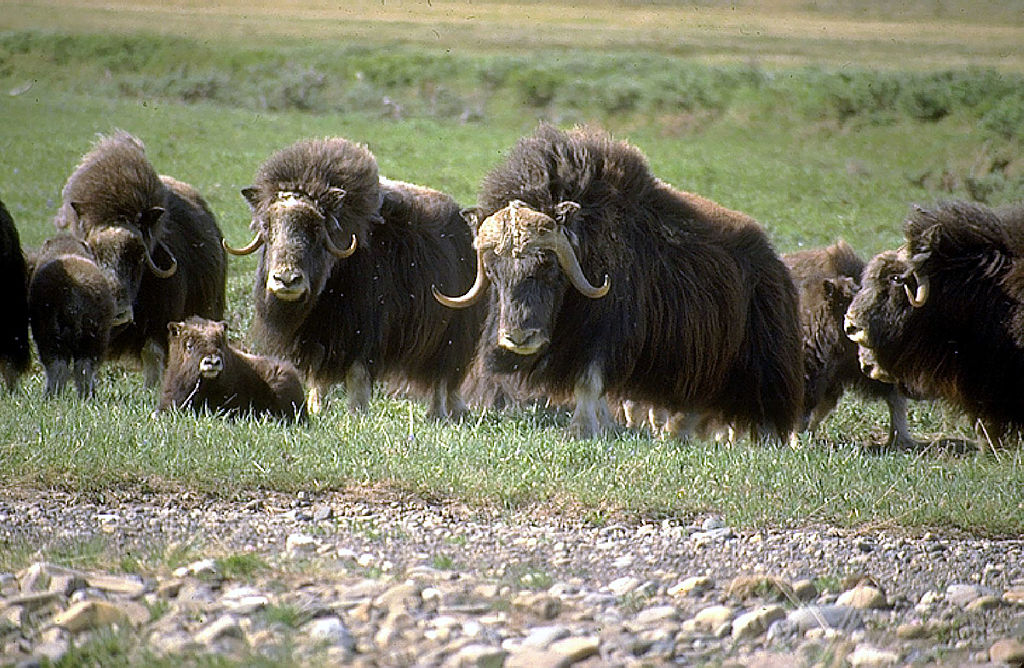Summary of Caribou and Muskoxen Help Slow Down Arctic Biodiversity Loss Amid Warming:
The Arctic is experiencing rapid changes due to climate change, including rising temperatures, melting sea ice, and thawing permafrost. These changes have significant impacts on the biodiversity and ecosystems of the region. However, a new study suggests that large herbivores like Caribou and muskoxen may help mitigate the effects of climate change by grazing on plants that would otherwise dominate the landscape. The study found that these herbivores can reduce shrub cover, increase plant species richness and diversity, and positively affect soil microbial diversity. The researchers suggest conserving and restoring these herbivores could be an effective strategy to mitigate the loss of tundra biodiversity caused by climate change.
The Caribou and Muskoxen: Champions of Arctic Biodiversity
– The Arctic is undergoing rapid and unprecedented changes due to climate change, threatening its unique biodiversity.
– Caribou and muskoxen, as large herbivores, may help buffer the effects of climate change on tundra biodiversity through their grazing habits.
– A recent study conducted across four Arctic countries examined the impact of these herbivores on tundra vegetation and soil biodiversity.
– The results showed that Caribou and muskoxen play a crucial role in maintaining and enhancing tundra biodiversity in the face of climate change.
– Conserving and restoring these herbivores could be an effective strategy to mitigate biodiversity loss in the Arctic.
The Arctic region is experiencing dramatic changes due to climate change, with rising temperatures, melting sea ice, and thawing permafrost becoming the new norm. These changes threaten the delicate biodiversity and ecosystems that thrive in the Arctic tundra. However, recent research suggests that caribou and muskoxen, two iconic herbivores of the region, maybe the unlikely saviors in the face of this biodiversity crisis. This article delves into the fascinating role these animals play in slowing down Arctic biodiversity loss and sheds light on the unique dynamics of their interactions with their environment.
The Threat to Tundra Biodiversity:
The tundra, which spans about 20% of the Earth’s land surface in the Arctic, is characterized by cold and dry conditions, a short growing season, and low vegetation. It is home to various life forms, including mammals, birds, and insects. However, climate change is wreaking havoc on this fragile ecosystem. Rising temperatures prolong the growing season, encouraging the growth of shrubs and trees at the expense of other plant species. Melting sea ice disrupts food availability and habitat availability for marine mammals and coastal birds. Thawing permafrost releases greenhouse gases and causes land sinking, altering hydrology and vegetation patterns. Changing precipitation patterns affect soil moisture and nutrient availability. These changes have led to noticeable declines in tundra biodiversity, emphasizing the urgent need for conservation interventions.
Caribou and Muskoxen: The Heroes of the Tundra:
With their unique adaptations and behaviors, Caribou and muskoxen seem to significantly impact tundra biodiversity. Caribou, or Rangifer tarandus, are known for their long migrations and flexible feeding habits. They consume various plants, including grasses, sedges, lichens, mosses, and shrubs. Muskoxen, or Ovibos moschatus, possess impressive adaptations that enable them to thrive in harsh Arctic conditions. They also feed on a diverse range of plant species. These large herbivores have caught the attention of researchers from Canada, Denmark, Norway, Sweden, Switzerland, the UK, and the US, who conducted a large-scale experiment to investigate their impact on tundra biodiversity.
The Study and Its Findings:
The study involved 12 sites across four Arctic countries: Canada, Greenland, Norway, and Sweden. At each site, the researchers established four types of plots: fenced plots to exclude herbivores, open plots to allow herbivores, warmed plots that increased temperature, and control plots. The researchers monitored these plots for four years, measuring various biodiversity indicators, including plant species richness, plant functional diversity, plant biomass, soil microbial diversity, soil carbon content, and soil nitrogen content.
The results were astounding. Caribou and muskoxen were found to have a positive effect on tundra biodiversity. They reduced shrub cover, known to dominate the landscape under climate change, and increased plant species richness and functional diversity. Interestingly, these effects were more pronounced in the warmed plots, suggesting that these herbivores can counteract some of the negative impacts of climate warming on tundra vegetation. Additionally, Caribou and muskoxen positively affected soil microbial diversity, increasing soil carbon and nitrogen content through feces and urine.
Implications and the Way Forward:
The findings of this study highlight the crucial role caribou and muskoxen play in maintaining and enhancing tundra biodiversity in the face of climate change. By mitigating the dominance of shrubs and fostering plant diversity, these giant herbivores create and maintain habitats for various species. Conserving and restoring caribou and muskoxen populations could be a promising strategy to counteract the loss of tundra biodiversity and the essential ecosystem services it provides. Further research is needed to better understand the complex interactions between herbivores, plants, microbes, and climate in the Arctic, enabling more targeted conservation efforts.
Conclusion:
The Arctic may be undergoing unprecedented changes due to climate change, but the presence of Caribou and muskoxen offers hope for its threatened biodiversity. These large herbivores can shape the landscape through their grazing habits, counteracting the detrimental effects of global warming on tundra vegetation. Understanding and appreciating the unique dynamics of these interactions is essential for effective conservation strategies. By championing the cause of Caribou and muskoxen, we can pave the way for a future where Arctic biodiversity thrives despite its challenges.


